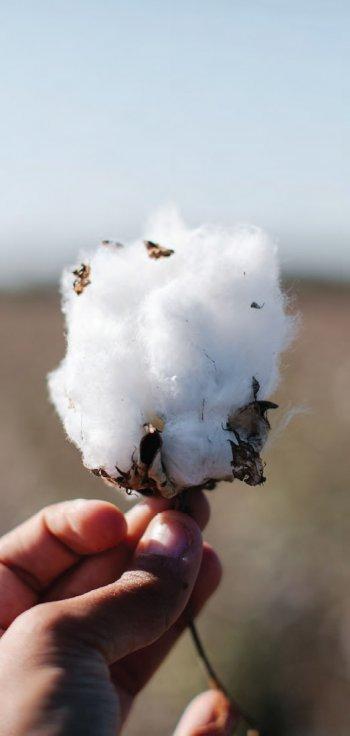The New Model on Sustainable Development
by Leon Kaye, Executive Editor, TriplePundit

CR Magazine Autumn 2018 | 3BL Forum: Brands Taking Stands Edition
At one time cotton was Haiti’s fourth largest agricultural export, but by the late 1980s, its cultivation largely ceased for economic, political and environmental reasons.
Now however, the Caribbean’s first independent nation is on the cusp of welcoming back cotton production due to the work of Timberland and the Smallholder Farmers Alliance (SFA). Since 2010, the popular outdoor lifestyle brand has supported SFA’s efforts to boost the yields – and the pocketbooks – of Haiti’s farmers.
If this partnership succeeds, the project could serve as a case study as to how a global brand can do its part to spur a local economy so that it can thrive within the international marketplace.
And we are also witnessing a new model for sustainable development – timely considering more consumers are not only concerned about the social and environmental impacts of the products they buy, but also want to know how their purchases can help improve the lives of the communities and families from which they are sourced.
CR Magazine recently spoke with Atlanta McIlwraith, senior manager of community engagement and communications at Timberland, to talk about the story behind the company’s quest to revive Haiti’s cotton industry.
“Over the years, we’ve talked with our customers, and they told us that they want to know about the impacts on individual farmers. The stories they want to hear are even more than about communities; we found that customers value knowing about the individual who grew the cotton that ended up in the product,” said McIlwraith.
Farmers in Haiti have long struggled to make a living. Yields were often low, and many farmers’ children could not attend school as the Haitian government provides few options for free education. One community that summed up the challenges Haitian farmers faced is in the northern city of Gonaives, where Timberland and SFA are currently reviving the country’s cotton production.
The partnership with SFA has many moving parts. The first five years of this program involved the launch of a reforestation initiative to help the company fulfill its commitment to plant 5 million trees throughout Haiti.
“One challenge we had to overcome was asking the SFA to come up with a way to ensure this program was self-sustaining so it would not require a constant financial commitment,” said McIlwraith. “The initial solution suggested by SFA back in 2010 was to pay farmers to plant the trees, but we asked them, what happens when the five-year financial commitment ends?”
The NGO’s first response was to “find another donor,” but McIlwraith and her team encouraged them to develop a model that could generate enough revenues so it could keep operating in the event the partnership with Timberland ended in 2015.
The solution was a program in which farmers would spend time in tree nurseries to gain farm credits. Participation would allow these farmers to use those credits to purchase more tools and services from SFA. The project could then sustain itself by requiring farmers to not only return the same number of seeds they had taken from local seed banks, but an additional amount in order to maintain a reliable amount of seeds for future plantings. Participants were also required to pay a small percentage of their profits gained during their harvests.
According to McIlwraith, farmers who participated in the Timberland-SFA program saw an average increase of 40 percent in their yields, with a 50 to 100 percent increase in income, while 3,400 more of their children were able to attend school.
Currently, farmers participating in the cotton cultivation program agree to plant trees on a part of their land in the continued push to increase Haiti’s forest cover. In addition, no farmers are permitted to grow cotton on more than half of their land. The goal is that for each field of cotton, farmers plant as many as 50 trees for food, timber, living fences, or reforestation projects. The resulting “tree currency” model also gives farmers the option to exchange tree planting credits for benefits including the purchase of livestock, participation in local seed banks, microloans for women farmers, and training in business fundamentals.
This cotton project is still at its earliest stages. In August 2017, farmers planted 12 varieties of cotton in order to gauge which ones grow best. A year later, farmers in Gonaives worked together to plant a demonstration farm so other smallholders can be trained in growing the crop. Should this plan succeed, Timberland says it will make a preliminary cotton purchase in spring of 2019, and the company is currently exploring ways it could incorporate the Haitian cotton into its fabric supply chain and further scale impact by bringing other values-driven brands on board.
Several challenges remain. As of now there is no existing infrastructure in Haiti to process cotton once it is picked. Timberland is currently searching for a mobile cotton gin so farmers can see that their crop will go to market. Figuring out the best path that this cotton can take to fabric mills will also entail plenty of legwork.
But for Timberland, SFA, and the farmers in Haiti, this is about more than cotton. One success story has been the emergence of other crops that could offer more opportunities to farmers. An example is moringa, a fast-maturing tree with leaves that boast abundant amounts of protein. In 2012, Timberland introduced SFA to Kuli Kuli Foods, which now markets moringa-infused bars and drinks, including Green Energy Shots and Moringa Protein Powder.
Then there is the social impact that Timberland’s work has inspired. “For me, what’s been most rewarding is just the thought about the scale of this project, and to think about the initial phase that has so far has put 3,400 more kids in school,” said McIlwraith.
“Just think if we could add 17,000 more farms, with 34,000 farmers [as the vast majority of farms in Haiti are farmed by husband and wife teams], and they could achieve that 40 percent increase in yields along with those higher incomes, which means more kids would be enrolled in school,” said McIlwraith as she wrapped up her interview with CR Magazine.
In another five years, Timberland anticipates another 25 million trees being planted, further healing Haiti’s environment while generating additional economic benefits for families and communities. Meanwhile, Timberland’s customers can expect more stories that will bring them even closer to this venerable outdoor lifestyle brand.

